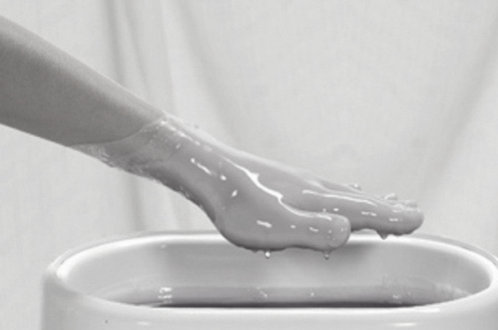Much like hydrocollator packs, wax baths were a popular way to deliver local heat to the tissues more efficiently than through the air. Both wax baths and hydrocollator packs cooled down slowly after their initial application, so the therapist could leave the patient and attend to other patients while the heat from the wax safely did its work.
Wax baths were used primarily for hands and forearms, because they needed the patients to dip their arm repeatedly in the wax, allowing the wax to cool between each application. With 10 or 15 layers of wax on their arm and hand, the patient would then sit with their arm wrapped in towels, until the wax cooled, at which point the wax ball became a therapeutic ball to be manipulated by the patient’s injured or arthritic hand.
Although solid at room temperature, paraffin wax melts at 130 degrees Celsius, so was kept in a small thermostatically controlled tank. The wax could be sterilised by heating the wax to 100 degrees, but the tank also needed to be cleaned of dead skin and debris that collected in the bottom. Here, the molten wax was ladled out, and the residue cleaned off with paper towels.
Description provided by Dave Nicholls of New Zealand.
Reference:
Licht S, editor. 1965. Therapeutic heat and cold. Baltimore: Waverly Press.

